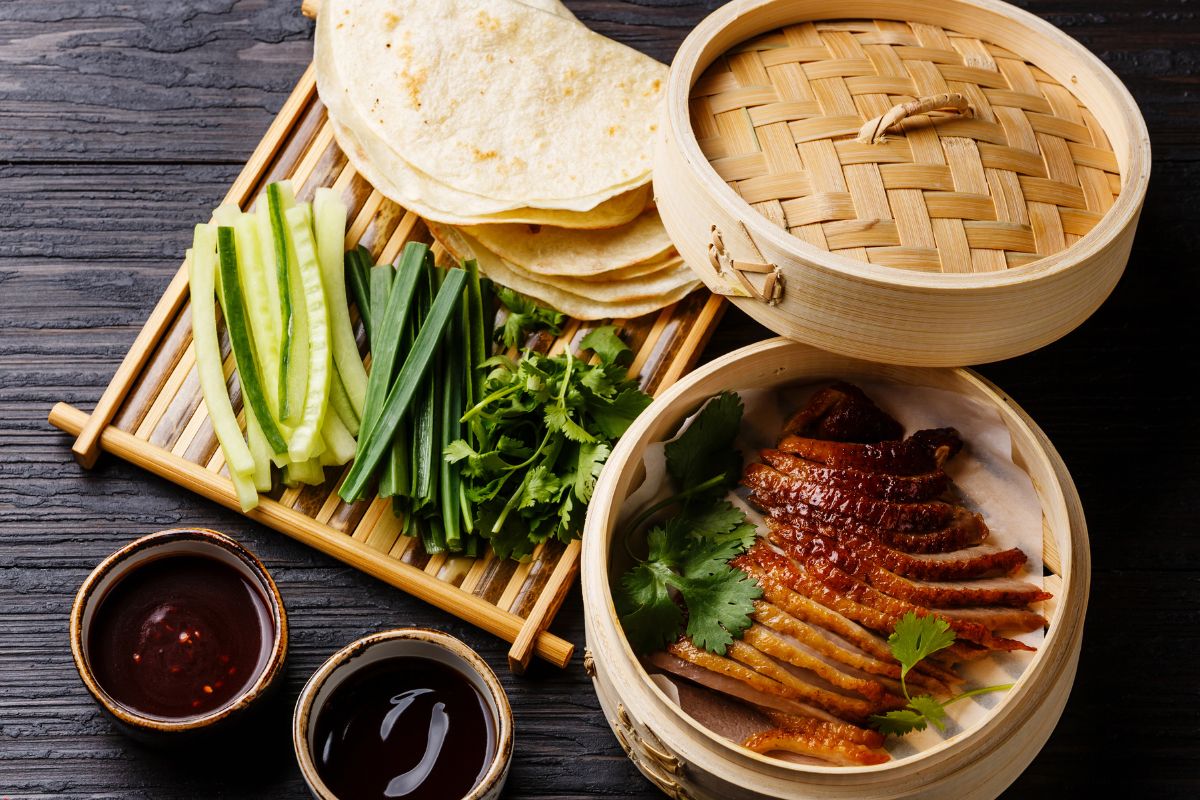The Internationalization Transformation of Chinese Cuisine
The visually appealing and aromatic Chinese cuisine never fails to captivate people from all over the world. What would happen if these flavors were combined with the culinary characteristics of different countries? With the advancement of globalization, many Chinese delicacies have ventured beyond national borders, blending with ingredients and cooking techniques from various parts of the world, giving birth to a plethora of novel and innovative dishes. This article aims to share with you these alluring cuisines!

The Transformation of Peking Duck
Peking Duck is one of China's most representative traditional cuisines, loved for its crispy skin and tender meat by diners both domestically and internationally.
In the context of internationalization, Peking Duck has undergone a series of innovative transformations.
Take the United States for example, in some high-end restaurants, chefs have ingeniously merged traditional Peking Duck with Mexican spices to create the "Mexican-style Roast Duck." They evenly sprinkle chili powder, cumin, and coriander on the duck's surface and serve it with corn tortillas and avocado sauce. With each bite, the rich aroma of the roasted duck unfolds in the mouth, followed by the peculiar fiery sensation of Mexican cuisine, creating a marvelous culinary experience.

Shifting our focus to Japan, local creative restaurants have introduced the "Japanese Teriyaki Roast Duck." Chefs meticulously brush a specially made teriyaki sauce on the crispy skin of the duck, sprinkle sesame seeds and chopped scallions, and serve it with Japanese sushi rice and seaweed. This not only retains the crispiness of the roast duck but also incorporates the delicate and refined style of Japanese cuisine, offering surprises with every bite.
Innovations in Sichuan Hot Pot
Sichuan Hot Pot, known for its numbing and spicy flavors, is one of China's most popular cuisines. In the wave of internationalization, Sichuan Hot Pot has given rise to many intriguing variations.
In Thailand, many restaurants have ingeniously combined Sichuan Hot Pot with Thai spices to create the "Thai Hot Pot." The soup base of this Thai Hot Pot involves the addition of lemongrass, galangal, and chili辣椒(là jiāo), with various fresh seafood and meats for cooking.

辣椒 (là jiāo), noun, chili
Examples:
- I don't like the taste of chili.
我不喜欢辣椒的味道。
wǒ bù xǐ huān là jiāo de wèi dào 。 - The dish is too spicy because of the chili.
因为辣椒这道菜太辣了。
yīn wèi là jiāo zhè dào cài tài là le 。
When indulging in this dish, one can experience the strong and numbing spiciness of Sichuan Hot Pot alongside the unique sour and spicy flavors of Thai cuisine, intertwining on the taste buds, creating an irresistible sensation.
In South Korea, the "Korean Hot Pot" introduced by some creative restaurants also stands out. The broth integrates Korean soybean paste and chili paste, accompanied by classic kimchi, pork belly, and tofu. As you cook and partake in the ingredients, you can appreciate the numbing spiciness of Sichuan Hot Pot and relish the distinctive and delicious taste of Korean cuisine, offering a unique flavor profile.
The Cross-Border Collaboration of Shanghai Soup Dumplings
Shanghai Soup Dumplings, another darling of the culinary world, with its thin skin, rich filling, and flavorful broth, has captivated countless individuals.
Amidst the process of internationalization, Shanghai Soup Dumplings have undergone various novel transformations.
In Italy, some creative restaurants have introduced "Italian-style Soup Dumplings." Chefs combine traditional Shanghai Soup Dumplings with Italian-specific ingredients, creating "Italian Beef Soup Dumplings" and "Italian Seafood Soup Dumplings." These innovative dumplings not only retain the rich broth characteristic of Shanghai Soup Dumplings but also cleverly incorporate the savory flavors of Italian sausage香肠(xiāng cháng) and seafood, offering diners an unprecedented taste experience.

香肠 (xiāng cháng), noun, sausage
Examples:
- I bought some sausages for breakfast.
我买了一些香肠当早餐。
wǒ mǎi le yī xiē xiāng cháng dāng zǎo cān 。 - The sausage tastes delicious.
这根香肠味道鲜美。
zhè gēn xiāng cháng wèi dào xiān měi 。
In Japan, upscale restaurants have also stepped up their game by introducing "Japanese-style Soup Dumplings." By pairing traditional Shanghai Soup Dumplings with Japanese ingredients, they have created "Japanese Eel Soup Dumplings" and "Japanese Crab Meat Soup Dumplings." These dumplings not only inherit the thin skin and tender filling of Shanghai Soup Dumplings but also add the delicious tastes of Japanese eel and crab, enticing diners with every mouthful.